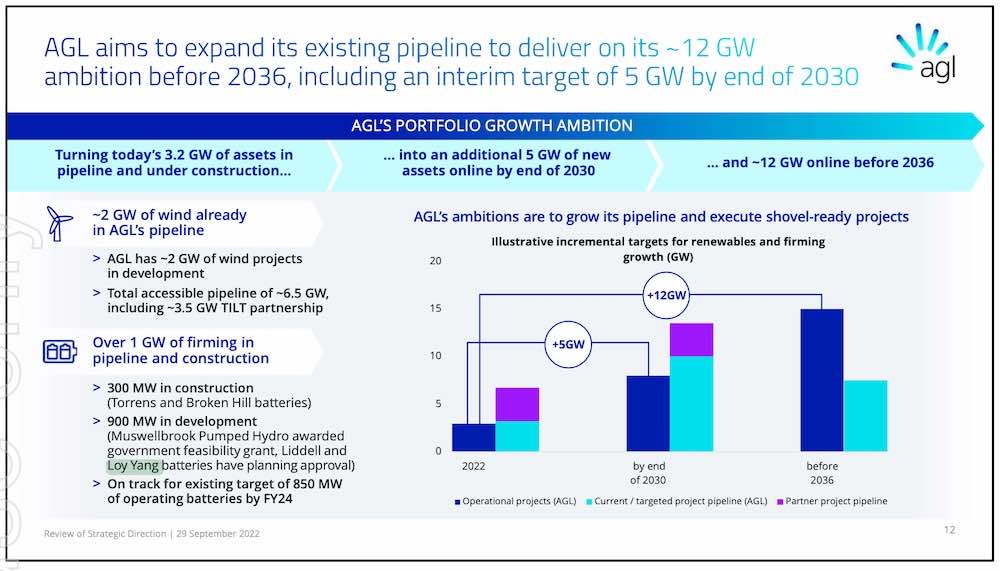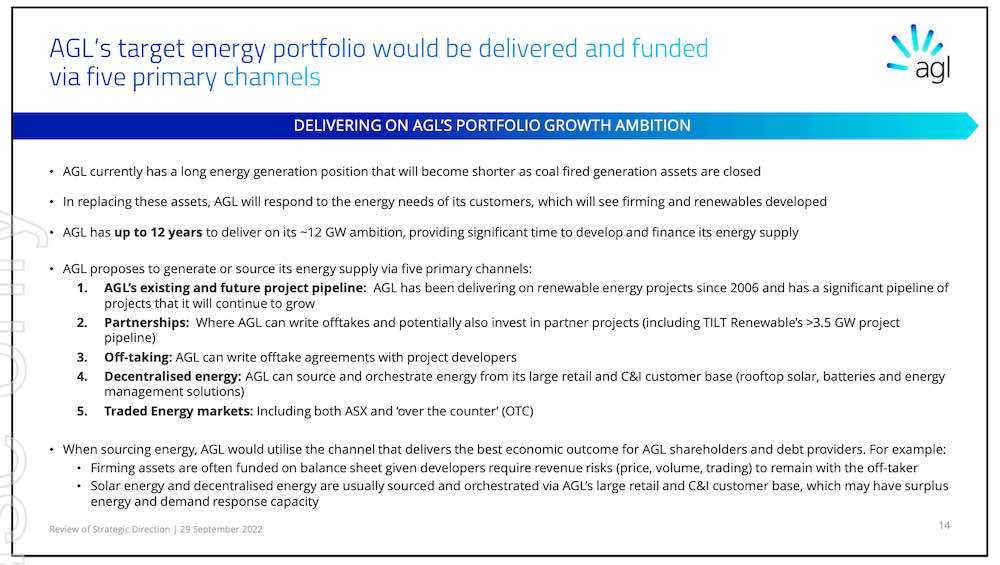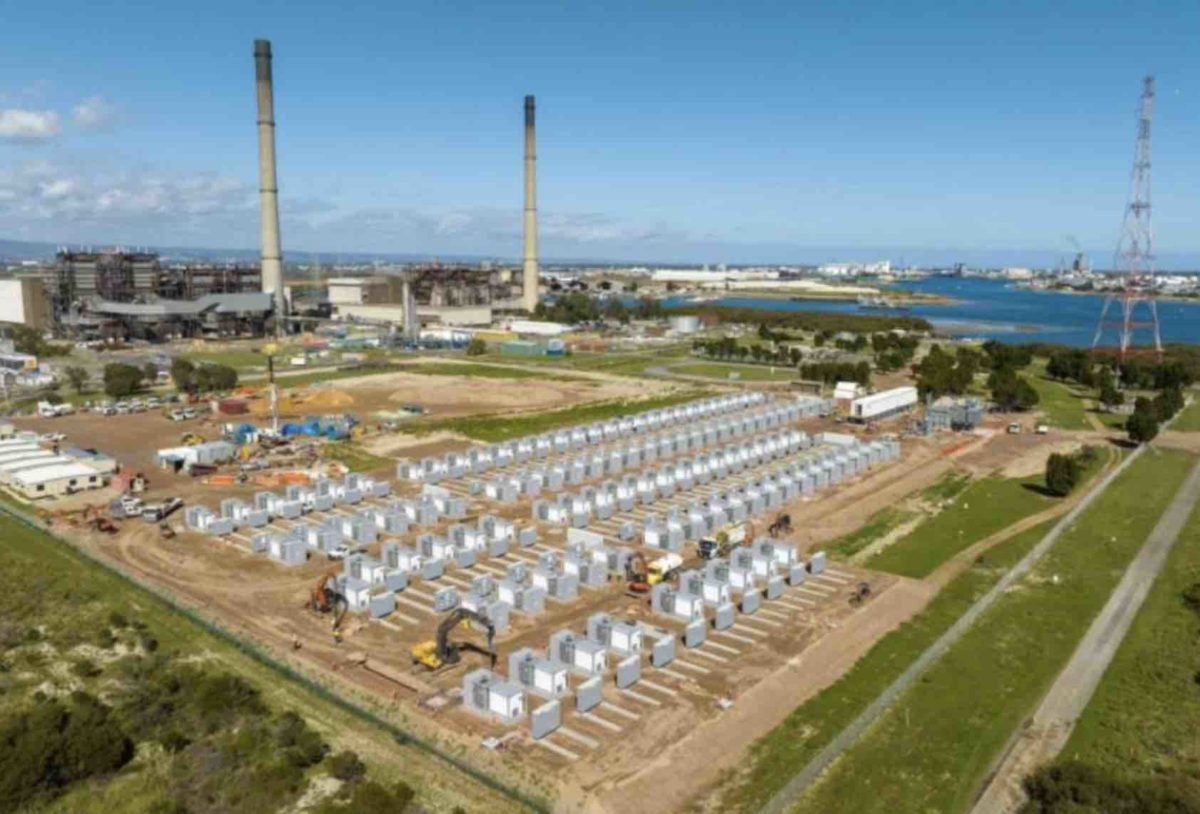AGL Energy’s plan to quit coal power generation a decade ahead of schedule means a much bigger and faster pivot to renewables. So what will this look like, how will it be financed, and what does it mean for the company’s coal workers?
Here’s what AGL’s new-look executive team, led by incoming interim CEO Damien Nicks, had to say on these topics at an investor briefing on Thursday morning.
A rapid shift to renewables

AGL says it will progressively decarbonise its asset portfolio with new renewable and firming capacity, with the goal of having up to 12GW – divided into 6.5GW of renewables like solar and wind and 5.5GW of “firming” capacity – in place before 2036, and an interim target of up to 5GW by 2030.
As the chart above shows, this is no small task. The 5.5GW of new firming requires the equivalent of eight long-duration storage and hydrogen projects the size of AGL’s Muswellbrook Pumped Hydro project.
“The way we’re thinking about this is we have a portfolio today of 3.2 gigawatts that that’s either in process or being planned for,” Nicks said.
“We’ve also set ourselves a target… of 5GW in totality, so we are committing to 5GW over the next seven years.
“And what I mean by that is assets such as firming assets, such as batteries, where we can utilise the benefit of our sites and the industrial energy hubs.
“So our portfolio will shift and our portfolio will shift very significantly over the next 12 years, but we’ve built the portfolio around what we believe will be the demand of our customers through additional electrification.”

Workers and a just transition
AGL’s decision to fast-track its coal exit is great news for the climate, but for coal workers and their families in Victoria’s Latrobe Valley, the announcement has broader implications.
“The decision that we have made today and announced today it has a very significant impact on our people and the communities,” said Nicks.
“We’re going to have to work very, very closely with state and federal governments over the coming years to transition our workforce, to reskill our workforce, and hopefully … [use] as much of that workforce as we possibly can with those new technologies.
“A template for Liddell …which is the first site that we’re rehabilitating …finally comes out at the end of April next year. That template will then be rolled out through the rest of our sites and working closely with communities through that process as well.”

The costs, benefits and bottom line of transition
AGL says its shift to renewables will require a total investment of up to $20 billion out to 2036, funded from a
combination of assets on AGL’s balance sheet, offtakes and partnerships.
On top of that, the decision to bring forward the closure date of Loy Yang A results in a non-cash impairment charge of around $700m million (after tax).
AGL says the impairment charge will be recognised against the carrying value the retiring thermal generation assets and reflects the shortened operating life of Loy Yang A as well as additional ESG costs.
But AGL also stresses that there is a strong commercial rationale for closing Loy Yang A early, with participation in the energy transition opening up a key source of value for shareholders.
“What we believe is by setting this direction from an ESG perspective, we’re going to have much greater access to capital both debt and equity into the future,” said Nicks.
“Because we’re all aware of the billions of dollars that are out there and the billions of dollars that need to be spent as well.
“That’s a big part of the reason why we are doing what we’re doing today,” Nicks added.
“Particularly, it will be ensuring that it’s in the best interest of our shareholders and it’s most economic in terms of how we the returns will come through.”











